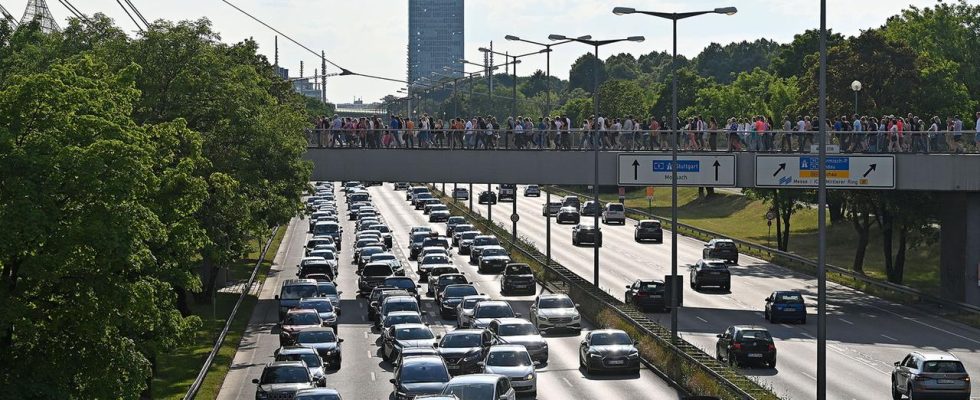The number of commuters has increased by around 700,000 within a year, according to the Federal Institute for Building, Urban and Spatial Research (BBSR). Frankfurt and Munich are therefore the commuter strongholds.
According to BBSR, there are more and more commuters in Germany. The number rose by around 700,000 within a year. As of June 30, 2022, 20.3 million employees subject to social security contributions were not working in the municipality in which they lived. The proportion of commuters among employees subject to social security contributions rose by half a point to 60 percent. The statistics do not reveal which means of transport commuters use.
Home office is not statistically recorded
In particular, the number of people who have to travel longer to work increased. 7.1 million drove more than 30 kilometers, half a million more than the year before. The number of people traveling more than 50 kilometers increased from 3.6 to 3.9 million. This also drove up the average one-way commute from 16.9 to 17.2 kilometers.
Especially in times of home office, this does not mean that this route is covered every day, according to the BBSR. The statistics show the place of residence and place of work of employees subject to social insurance contributions as of June 30, 2022. According to the BBSR, the statistics cannot be used to prove how many people actually went to work or worked from home during the reporting period. However, according to BBSR, they would show how the labor market centers are regionally distributed and how far they radiate into the surrounding area.
Frankfurt and Munich at the top
According to the data, Hesse’s largest city Frankfurt is one of the commuter strongholds in Germany. In mid-2022, 397,000 of those employed in the Main metropolis lived outside the city limits. Nationwide, only in Munich was this number even larger (444,000). The number of people commuting to Munich has increased by more than 100,000 within ten years. In Berlin there are 382,000 and in Hamburg 378,000.
“We observed an increase in commuting distances after years of stagnation, especially in the wider areas surrounding the labor market centers of Munich, Stuttgart, Frankfurt am Main and Hamburg,” says BBSR expert Thomas Pütz. “This suggests that small and medium-sized towns that are further away are also becoming increasingly attractive for employees as places to live – especially since home offices and other forms of mobile work enable more flexibility.”
However, he assumes that the home office boost caused by Corona is not yet noticeable in the number of commuters. The deadline of mid-2022 is too early for that. The coming years would be exciting here.
Where the paths are furthest
Last year, people from Ludwigslust-Parchim in Mecklenburg-Western Pomerania took the longest commutes of all districts, districts and cities. They covered an average of 27.4 kilometers. Immediately behind with 27.3 kilometers is the Altmarkkreis Salzwedel in Saxony-Anhalt, ahead of Märkisch Oderland (Brandenburg) with 27.2 and the Bavarian Landsberg am Lech with 27 kilometers.

